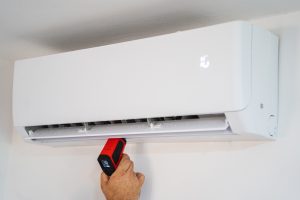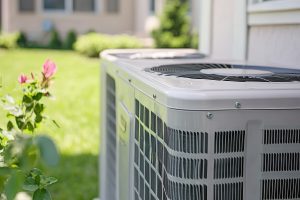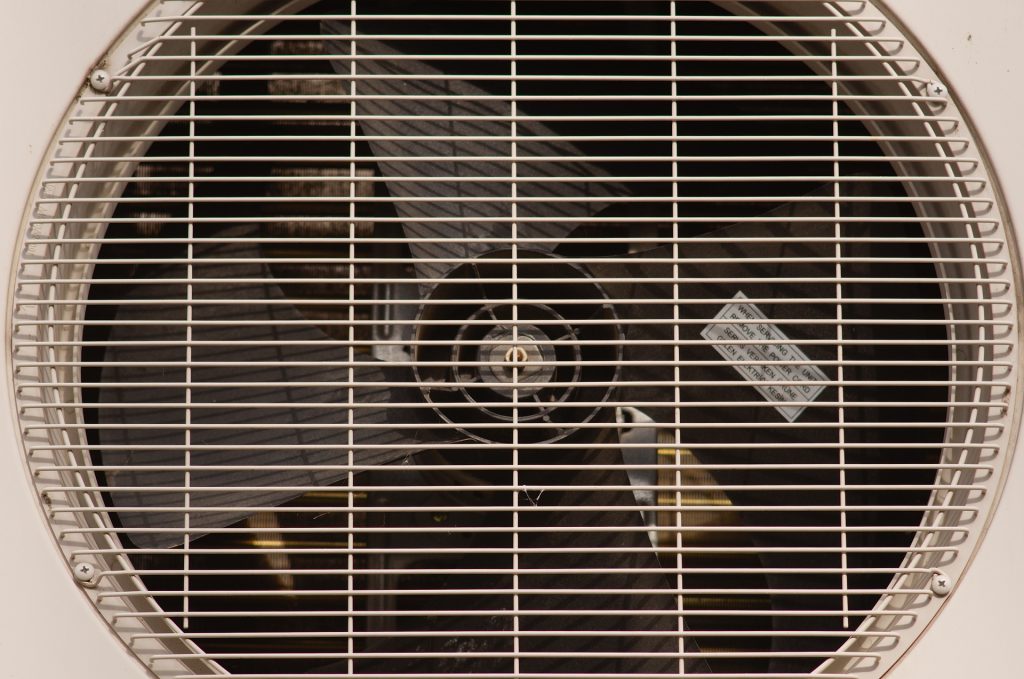Having the right temperatures in your house is paramount for enhanced comfort. No one wants to endure the wrath of scorching summer temperatures or the chilly winter months.
However, choosing the perfect air conditioning system for your home is not always easy. With so many great brands in the market, one has to wonder whether there is a unique criterion for choosing an AC that fits your needs.
Different homeowners will go for various features in an AC, depending on their needs. But in essence, it still streams down to the value that a customer expects from the equipment.
Some of the main factors that determine homeowners’ AC choice include the AC’s total cost (including installation), durability, warranties, the size of the home, and the SEER (energy efficiency) ratings.
Today, we compare three of the top brands in the industry: Trane vs. Carrier vs. Lennox, and which brand makes the best AC systems and what differentiates it from the rest.
Similarities between Carrier, Trane, and Lennox AC Units
These three brands have several similarities, even as they are different. This means that understanding them better requires us to look at both their uniqueness as well as their common features.
Some of the shared similarities include:
- The three brands manufacture AC units in three categories—Basic, Mid-range, and Premium.
- Most of their units are insulated to minimize noise during operation.
- Their premium models include a Wi-Fi-connected thermostat with touchscreen features.
- The AC cabinets are coated with baked-on enamel, which protects them against corrosion.
- All brands use the R-410A refrigerant, also referred to as Puron by the Carrier brand.
- Both premium and mid-range models have louvered cabinet vents, which shield the coil against various hazards like thrown stones.
Carrier vs. Trane vs. Lennox Air Conditioners Differences
What makes each brand unique? What are their selling points? Well, each of the three brands has distinct aspects as follows:
- Energy Efficiency
In terms of efficiency levels in these AC units, Lennox takes the lead. Their Lennox XC25 leads the way with a SEER rating of up to 26. Lennox is famous for making high-efficiency products, including heat pumps, air conditioners, and furnaces.
Trane brand comes second, with their leading model having a 22 SEER rating. Although at one time Carrier brand was known for their highly efficient ACs, they currently hold the third position with their Carrier Infinity 21, with up to 21 SEER rating.
Below are the most energy-efficient models in each brand:
| Brand models | Energy efficiency(SEER) | |
| Premium Models | Lennox XC25 | 26 |
| Trane XV20i | 22 | |
| Carrier Infinity 21 | 21 | |
| Mid-range AC Units | Lennox XC20 | 20 |
| Trane XV18 | 18 | |
| Carrier Infinity 17 | 17 | |
| Basic Ac Units | Lennox XC14 | 16 |
| Trane XR14 | 16 | |
| Carrier 24 ABC6 | 16 |
From the above data, it’s clear that Lennox outdoes the rest of the brands in every category. The interesting fact is that Lennox is the packs’ leader compared to Carrier and Trane and the rest of the AC brands in the market.
When choosing an energy-efficient brand that minds the environment, Lennox always comes first.
- Maintenance and Repairs
Any machinery or equipment with moving parts, breakdowns are almost inevitable. This means that you will need to undertake repairs, either minor or major, at one time or the other. AC systems from these three top brands are not different.
When comparing Trane vs. Lennox vs. Carrier AC systems, it’s good to note that most of them will have a 10-15 years lifespan. Very few of these brands’ central air conditioners last beyond 15 to 20 years without demanding repairs.
So, as you install that AC system, remember that you’ll need repairs at some point. However, proper and regular maintenance will prevent early breakdowns and costly repairs.
When it comes to maintenance and repairs, the following issues are worth noting:
Carrier: This brand sets itself ahead of the competition for convenience in repairs and maintenance. This is because their parts are readily available and not overpriced.
Trane: Spare parts for Trane air conditioners might cost a little more than those of Carrier ACs, especially in small towns and communities. This is mostly because the supply houses selling to the HVAC companies only supply Trane’s OEM parts—no cheaper generic parts. Check out our guide on troubleshooting Trane furnace for in-depth information.
Lennox: While there have been various complaints about repairs from homeowners and contractors in the past, this has taken a new turn. Initially, complaints were about costly spare parts since Lennox doesn’t accept generic spare parts, which also saw the repair time take too long.
But, from 2015, Lennox committed to overhauling its entire parts supply chain, consisting of over 110 000 spare parts inventory.
- Features
Besides efficiency levels, these AC brands also differ in terms of the available features as follows:
| Features | Lennox | Trane | Carrier |
| Humidity Control | Climate IQ | Comfort-R | Infinity Touch |
| Variable Fan | Yes | Yes | Yes |
| Wi-Fi | Premium Models | Premium Models | All Models |
| Smart Thermostat | iComfort S30 | ComfortLink II | Infinity, Côr |
| Communicating | Premium Models | Premium Models | Premium Models |
| Compatible with | Alexa | Nexia | Alexa &Côr Smart Home |
Features Definition:
- Humidity control – the feature helps reduce excess water in warm air, making the environment accommodating even at high temperatures.
- Variable fan – A condensing unit with a variable fan can slow or increase speed to match its variable capacity output. This feature also results in noiseless operation even at the lowest capacities.
- Smart thermostat – This feature gives you control of the HVAC system via Android and iOS devices.
- Compatibility – The AC systems can integrate with various smart devices and automation systems at home. For instance, Nexia gives you control over your home’s smart equipment from a single location (app). Alexa, on the other hand, is Amazon’s Echo operating platform, while Cor gives you control over any HVAC or home security system via Cor thermostat, hub app, and various other sensors.
- Communicating technology – this allows the sharing of information between a system’s components instead of having just a one-way flow of data from the thermostat. However, this means that all the system’s components must be “premium”—right from the AC, thermostat, and furnace/heat pump & air handler. If your AC system doesn’t already match, you must replace some components to fit the whole.
- Price Comparison
When it comes to prices for these three air conditioner brands, you won’t easily find them at online marketplaces. Essentially, Trane, Carrier, and Lennox use authorized dealers only to sell their products. This means that you should get the price estimates for each unit plus installation from your local dealer.
But, if you want to have a rough idea of how the prices vary for these brands, you can check out individual Carrier, Trane, or Lennox pricing reviews online. This will give you a clue of what to expect.
Typically, all these manufacturers pre-check their competitors’ pricing when setting theirs. This allows them to set competitive prices that don’t vary too much with others in the market.
All in all, when we talked to various authorized dealers and existing customers, Lennox models seemed to be more expensive than the rest. For instance, Lennox premium models are more expensive than premium models in other brands, by 10-20%.
For the mid-range and lower tiers, some models were expensive, and some cheaper. It all depends on the dealer you talk to.
Part of the reason why Lennox AC models tend to be relatively expensive lies in the superior efficiency they offer. In fact, their most efficient models are sold in three performance levels, including:
- Variable-capacity – with XC25 taking the lead with a 26 SEER rating
- Two-stage – with XC21 offering up to 21 SEER rating (ties with Carrier’s Infinity 21)
- Single-stage – with SL 18XC1 leading at 18.5 SEER
This implies that Lennox’s higher prices are justified by their high-efficiency rating on their AC units.
- Variable – Capacity Performance
When it comes to the performance of these brands, there are only small variations present. All three brands manufacture three types of AC units, including:
- Single-stage units
- Two-stage units
- Variable-capacity or variable-speed units
Models with variable capacity are designed to change speed or capacity in small increments, allowing the AC to meet your home’s precise cooling demands.
Carrier Infinity 19VS: This is the quietest model of the three brands, with the lowest capacity of up to 25%. It has five speeds, representing an 18.75% jump per speed.
Trane XV20i: This model has a 30% capacity, which is the lowest in the Trane models. The company indicates that Trane XV20i has 700 speeds and changes capacity in 0.1% increments.
Lennox XC25: The model has a capacity ranging between 35% and 100%. With 65 speeds, it modulates in 1% increments. LG manufactures variable-capacity compressors for Lennox using inverter technology.
When it comes to quietness, there is not much noticeable difference. While a 25% capacity unit produces 5-7 decibels less noise than a 35% one, it’s hard to notice the difference unless you are standing close to the outside unit.
Choosing the Right Contractor
In almost all Carrier, Trane, or Lennox air conditioner reviews, one critical issue is always emphasized—proper installation. No matter the brand, improper installation will always lead to poor results.
So, don’t just go for that top brand; go for the best installer as well. This way, you won’t have to deal with issues like leaking ducts, systems oversizing, or even inappropriate refrigerant charges.
Based on research done by NIST (National Institute of Standards and Technology), improper installations are the primary culprit in efficiency losses, even for the cutting-edge models. And according to the study, poor HVAC system installations can result in up to a 30% increase in household energy.
Therefore, always seek the services of qualified installers, even when they are a little bit expensive. Remember, cheap might be more costly in the long run.
However, if the price difference is too wide, say beyond 15%, it might be too high even for the top brands. The same goes for lower prices. If it goes way below 15%, this should certainly raise a red flag.














